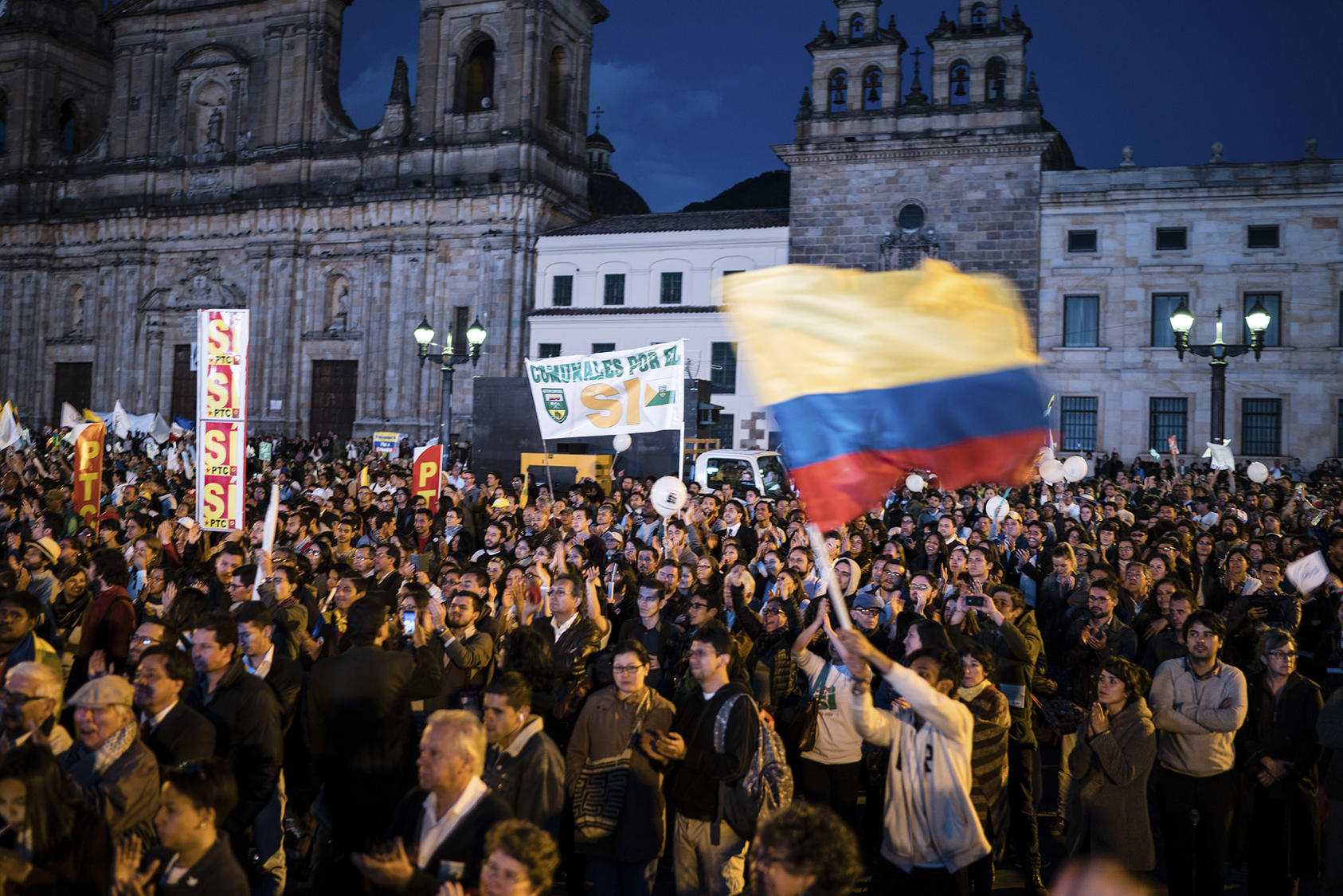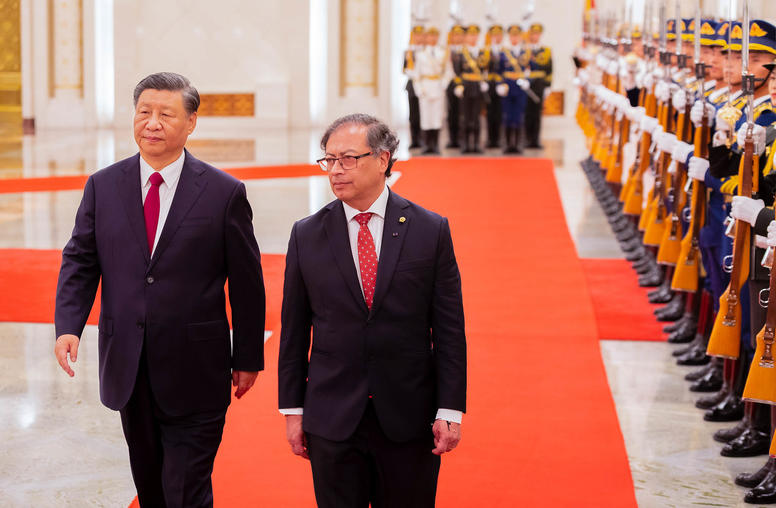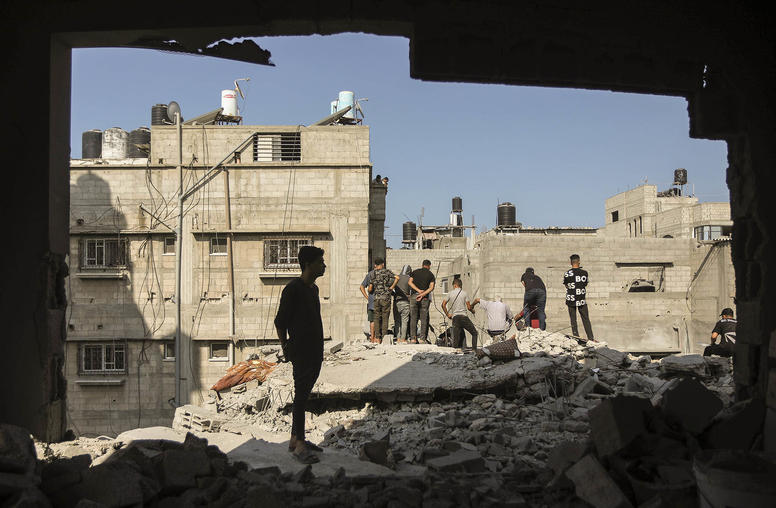Colombians Rally Online in New Movement for Peace
A burgeoning WhatsApp campaign draws diverse leaders pushing to defend the interests of peace.
It began with a few supporters of Colombia’s 2016 peace agreement meeting at a Bogota cultural center. That gathering, in January of this year, soon led to the creation of a WhatsApp group—a platform to discuss how to defend the interests of peace amid concerns about the policies of the new government. Within months, scholars, union officials, artists, columnists, peace negotiators and politicians from across the political spectrum—minus the government’s Democratic Center—had flocked to the group. By mid-July, a spontaneous citizens movement of thousands of Colombian leaders was making its voice heard. Its objectives: to strengthen popular support for the previous government’s peace deal with the rebels of the Revolutionary Armed Forces of Colombia (FARC) and to support the peace process with the National Liberation Army (ELN).

Now an unstructured organization calling itself Let’s Defend Peace, the original group has morphed into 16 separate chapters that include sub-national groups and thematic ones focused on youth, the environment, Christians and women. In total, over 2,000 people are actively engaged, with each leader often representing hundreds more. So far, organizers said, DLP (the Spanish acronym for Defendamos La Paz) has managed to operate by consensus, despite the wide-ranging political diversity of its leadership.
DLP shows “the remarkable persistence, creative flair and refusal to take no for an answer with which—despite every adversity—Colombians pull together to build a better society,” said Lisa Haugaard, the executive director of the Washington-based Latin America Working Group. “The hard work has just begun,” she said while introducing three of the group’s organizers at the U.S. Institute of Peace earlier this July.
The event was co-hosted by the Latin America Working Group, the Colombian Human Rights Committee, the Center for Justice & International Law, and the Inter-American Dialogue. USIP has long been active in working to help bring peace to Colombia.
Opposition to the FARC Peace Deal
The FARC agreement, which sought to end the half-century armed insurgency, was rejected by 50.2 to 49.8 percent of the vote in a national referendum in October 2016 but later approved by Congress after significant amendments. Then, in June 2018, the Democratic Center party headed by former President Alvaro Uribe, which opposed the agreement all along as too lenient and conferring too many privileges on the ex-guerrillas, won the presidency. Now, President Ivan Duque is seeking to revise key parts of the agreement and altering prioritization of its implementation, according to critics.
Two characteristics distinguish DLP from other social movements, said Juan Fernando Cristo, a former interior minister and senator.
The first is the diversity of its participants. They come from every sector of society, geographic area, and political stream, except the Democratic Center, Cristo said. Those involved range from former guerrillas to retired generals, victims’ advocates to agrarian reformers.
“We come without political commitments,” Cristo said. “The only thing that we all agree on is defending peace and looking to the future, not the past.”
The second unique element is the explosion of a social movement without a structured leadership. It’s a form of organization that within a few short months has been able to reach virtually every leader in Colombia who wants to rally around the cause of peace.
United by a Belief
DLP is not a political coalition, stressed Luis Gilberto Murillo, the former governor of the department of Choco and environment minister under the previous president, Juan Manuel Santos. Participants with diverging or even opposing policy preferences are united by the belief that to engage in politics effectively, Colombians need peace and the strengthened democracy that can only evolve from an end to the conflict.
“I believe we are really having an impact and getting the government’s attention,” said Laura Gil, a former columnist at the Bogota newspaper El Tiempo who now edits La Linea del Medio, a news portal promoting political centrism.
DLP is now in the process of gathering a million signatures urging the government to comply with the term of the 2016 FARC agreement, particularly those allowing potentially for the establishment of 16 new seats in Congress for underrepresented territories long-affected by the armed conflict. Of particular note, Gil said, is that each leader in the WhatsApp groups represents hundreds of other people.
Last week, DLP organizers were preparing for a major public march to rally popular support for the protection of social leaders, who have suffered scores of assassinations in the past several years.
Movement Priorities
Asked by moderator Steve Hege, USIP’s senior expert on Colombia, what the movement’s priorities are to build its strength, Cristo said the first is to contain efforts by some “groups in the country to destroy the FARC peace agreement.” The second is to stop the killing of social leaders in areas formerly controlled by the FARC and where the government has failed to extend its authority. And third, to win compliance with aspects of the accord critical to a lasting peace—follow-through on special development projects in 170 rural municipalities and full compliance with the Special Jurisdiction for Peace, a unique transitional justice court designed to try former guerrillas and military officials and hand down alternative and restorative sentences.
“Many in Colombia say that political polarization is undermining the agreement.” Hege said. “What can DLP contribute to diminish these tensions?”
“It may seem like a small thing, but we have to disarm language,” Murillo replied. DLP has already shown it can create a national dialogue among adversaries in pursuit of a common goal, he said. “Perhaps opening a dialogue with the government on areas where there is less disagreement, such as protecting social leaders or the environment, can help ease discussion on Colombia’s most divisive issues.”


